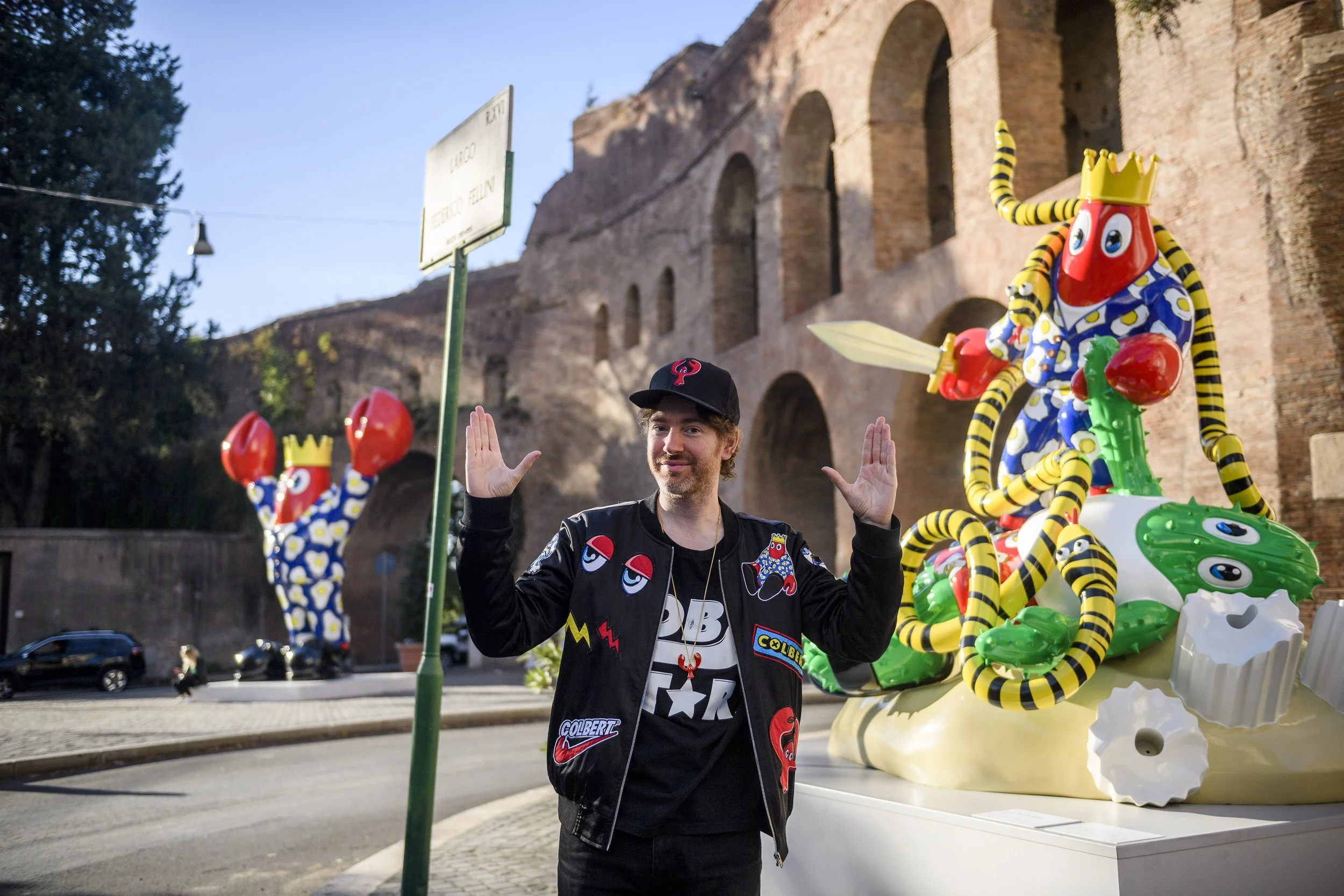"HOUSE OF THE LOBSTER", an exhibition by Philip Colbert at National Archeological Museum of Naples
“HOUSE OF THE LOBSTER” an exhibition by Philip Colbert at National Archeological Museum of Naples
In HOUSE OF THE LOBSTER, Colbert pays homage to the origins of lobster mythology through a captivating body of work inspired by the museum's mosaic collection from Pompeii, unearthed between 1830 and 1832. The exhibition not only traces the significance of lobsters in art history but also contemplates broader themes such as mortality, conflict, and the cyclical nature of existence.
At the heart of the exhibition is a marine mosaic found at Pompei VIII, 2 16 featuring a central battle between a lobster, moray eel, and octopus. This ensnared conflict deeply resonated with Colbert and inspired the underwater battle scenes in the Pompeii Series (2023 – present), on display here. Colbert explores the timeless struggle symbolised in the mosaic by the lobster, eel, and octopus, weaving a narrative of perpetual conflict.
The battle scene motif has become a consistent theme within Colbert's artistic practice, where he adeptly reinterprets masterpieces from art history to explore the inherent tensions between traditional art and contemporary pop and digital culture. Among the objects housed in the museum's collection, although not currently on public display, lies one of the most famous mosaics of antiquity depicting the triumph of Alexander the Great over Darius III of Persia. This mosaic, a replication of a lost painting attributed to Philoxenus of Eretria or Apelles, serves as a testament to the profundity of ancient painting that has regrettably vanished through the ages.
The relevance of this ancient battle scene, made thousands of years ago, plays a fundamental role in Colbert's practice. In his work titled "After Battle of Issus Mosaic," Colbert takes the composition and transplants it into the surreal and apocalyptic landscape of his retro-futuristic lobster world. By doing so, Colbert invites viewers to reconsider the enduring impact of historical art within the context of our rapidly evolving cultural landscape.
Philip Colbert, Artist, said:
“On my first visit to the MANN, I was blown away by the mosaic. After studying historical battle scene paintings over many years, I was suddenly struck by the profound influence that mosaics like this had on artists such as Rubens. Its epic scale reset my understanding of the great battle painting. I was challenged with a work that was grand in scale, complex in composition, and exquisite in detail. The absence of certain elements, lost to the passage of time, imbued the artwork with a sense of mystery, leaving room for the imagination to fill in the gaps.”
What I love most about art is how it can blur the metaphysics of time, intertwining the past, present, and future. Mosaics, such as the “Alexander the Great” mosaic, exemplify how ancient blueprints in art history, especially those from antiquity, profoundly shaped the Renaissance. Unfortunately, this connection isn't always publicly acknowledged or well-known.”
Massimo Osanna, Director General of the Museums of the Ministry of Culture, said:
"Contemporary art at the National Archaeological Museum with an itinerary that will involve not only the youngest visitors and their families, but also classical art enthusiasts: Colbert's works, in fact, are an act of love towards our cultural roots, which take us back to antiquity."
26 JANUARY - 1 APRIL 2024



